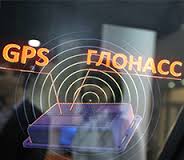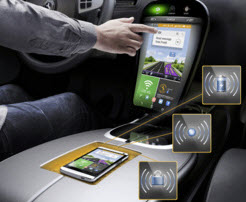Broadcom Announces Industry's First Global Navigation (GPS, GLONASS, SBAS, QZSS and BeiDou) and Sensor Hub Combo Chip - BCM4773
10 September 2014

News Highlights:
- Drives new wave of mobile apps for health, fitness and "lifelogging" with always-on background location
- Integrates GNSS and provides direct connection to Wi-Fi combo to preserve battery power and improve context awareness
- Tight communication between Wi-Fi and sensors increases positioning accuracy and enables location-based services in various environments
The Broadcom BCM4773 minimizes battery drain and adds a new layer of intelligence to location technology on mobile devices by integrating the GNSS chip and sensor hub into a single combo chip. Broadcom's architecture enables information from Wi-Fi, Bluetooth Smart, GPS and micro electro-mechanical systems (MEMS) to be calculated on a single system-on-chip (SoC) instead of the application processor (AP). This unique design drives more than 80 percent power savings by offloading from the AP and lowers cost by reducing board area by 34 percent.
"Broadcom today extends its leadership by announcing the industry's first combo chip that brings GNSS and sensor hub technology together to revolutionize mobile apps in areas such as health, fitness and lifelogging," said Mohamed Awad, Broadcom Director, Wireless Connectivity. "We are proud to make all mobile platforms even smarter by enabling them to dynamically predict and react to consumers' needs."
Additionally, Broadcom brings more intelligence to context awareness by integrating GNSS and providing a direct connection to the Wi-Fi combo chip. This allows a mobile device to know where a user is and what the user is doing to further personalize the experience. For example, a BCM4773-based smartphone can use information from Wi-Fi, Bluetooth Smart, GPS and MEMS to recognize when a runner is outdoors versus inside on a treadmill and dynamically manage these technologies to save battery life and optimize the user experience, all without involving the main AP.
Key Features:
- Optimized for hardware offload of sensor fusion, on-chip positioning, geofencing and location batching
- More than 80 percent power savings compared to standard GNSS receivers
- 34 percent board area reduction by integrating GNSS receiver and sensor hub
- Standalone microcontroller offloads fusing of sensor data from the AP to maximize power savings
- Concurrent support for five different satellite systems, including GPS, GLONASS, SBAS, QZSS and BeiDou
- Ultra-low power on-chip positioning for background and foreground location using GNSS
- On-chip Wi-Fi positioning using a direct connect communication protocol to the Wi-Fi SoC
- Batching support for all devices connected to the Location Hub, including Wi-Fi, MEMS and GNSS
Availability
The Broadcom BCM4773 is currently in production.
Press release
- Drives new wave of mobile apps for health, fitness and "lifelogging" with always-on background location
- Integrates GNSS and provides direct connection to Wi-Fi combo to preserve battery power and improve context awareness
- Tight communication between Wi-Fi and sensors increases positioning accuracy and enables location-based services in various environments
The Broadcom BCM4773 minimizes battery drain and adds a new layer of intelligence to location technology on mobile devices by integrating the GNSS chip and sensor hub into a single combo chip. Broadcom's architecture enables information from Wi-Fi, Bluetooth Smart, GPS and micro electro-mechanical systems (MEMS) to be calculated on a single system-on-chip (SoC) instead of the application processor (AP). This unique design drives more than 80 percent power savings by offloading from the AP and lowers cost by reducing board area by 34 percent.
"Broadcom today extends its leadership by announcing the industry's first combo chip that brings GNSS and sensor hub technology together to revolutionize mobile apps in areas such as health, fitness and lifelogging," said Mohamed Awad, Broadcom Director, Wireless Connectivity. "We are proud to make all mobile platforms even smarter by enabling them to dynamically predict and react to consumers' needs."
Additionally, Broadcom brings more intelligence to context awareness by integrating GNSS and providing a direct connection to the Wi-Fi combo chip. This allows a mobile device to know where a user is and what the user is doing to further personalize the experience. For example, a BCM4773-based smartphone can use information from Wi-Fi, Bluetooth Smart, GPS and MEMS to recognize when a runner is outdoors versus inside on a treadmill and dynamically manage these technologies to save battery life and optimize the user experience, all without involving the main AP.
Key Features:
- Optimized for hardware offload of sensor fusion, on-chip positioning, geofencing and location batching
- More than 80 percent power savings compared to standard GNSS receivers
- 34 percent board area reduction by integrating GNSS receiver and sensor hub
- Standalone microcontroller offloads fusing of sensor data from the AP to maximize power savings
- Concurrent support for five different satellite systems, including GPS, GLONASS, SBAS, QZSS and BeiDou
- Ultra-low power on-chip positioning for background and foreground location using GNSS
- On-chip Wi-Fi positioning using a direct connect communication protocol to the Wi-Fi SoC
- Batching support for all devices connected to the Location Hub, including Wi-Fi, MEMS and GNSS
Availability
The Broadcom BCM4773 is currently in production.
Press release
19.03.2015




